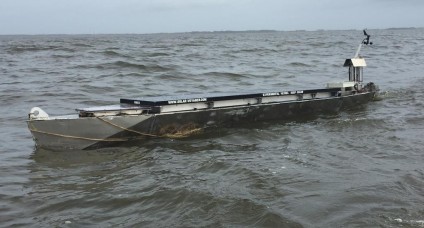
Breaking News
 $26M Frozen on Blockchain - With One Click
$26M Frozen on Blockchain - With One Click
 Italy are on national strike shutdown rejecting digital enslavement...
Italy are on national strike shutdown rejecting digital enslavement...
 The following U.S. states are currently using the rebranded "Reporty Homeland Security" so
The following U.S. states are currently using the rebranded "Reporty Homeland Security" so
 NATO Chief Urges Europe To Prepare For Long-Term World War With Russia, China, Iran & North Korea
NATO Chief Urges Europe To Prepare For Long-Term World War With Russia, China, Iran & North Korea
Top Tech News
 HUGE 32kWh LiFePO4 DIY Battery w/ 628Ah Cells! 90 Minute Build
HUGE 32kWh LiFePO4 DIY Battery w/ 628Ah Cells! 90 Minute Build
 What Has Bitcoin Become 17 Years After Satoshi Nakamoto Published The Whitepaper?
What Has Bitcoin Become 17 Years After Satoshi Nakamoto Published The Whitepaper?
 Japan just injected artificial blood into a human. No blood type needed. No refrigeration.
Japan just injected artificial blood into a human. No blood type needed. No refrigeration.
 The 6 Best LLM Tools To Run Models Locally
The 6 Best LLM Tools To Run Models Locally
 Testing My First Sodium-Ion Solar Battery
Testing My First Sodium-Ion Solar Battery
 A man once paralyzed from the waist down now stands on his own, not with machines or wires,...
A man once paralyzed from the waist down now stands on his own, not with machines or wires,...
 Review: Thumb-sized thermal camera turns your phone into a smart tool
Review: Thumb-sized thermal camera turns your phone into a smart tool
 Army To Bring Nuclear Microreactors To Its Bases By 2028
Army To Bring Nuclear Microreactors To Its Bases By 2028
 Nissan Says It's On Track For Solid-State Batteries That Double EV Range By 2028
Nissan Says It's On Track For Solid-State Batteries That Double EV Range By 2028
A solar-powered, autonomous boat is currently crossing the Atlantic

The idea follows in the wake of the Klepper E-Kayak, but while the E-Kayak is an add-on kit for a human-powered vessel, the Solar Voyager is designed to be completely unmanned. It can reach a top speed of 3 mph (5 km/h) running off a 280-watt array of solar panels, stored in batteries for night-time travel, and connects to the Iridium satellite constellation to navigate to preprogrammed GPS waypoints.
The robo-boat itself is 18 feet (5.5 m) long and 2.5 feet (0.76 m) wide, with a hull made of aluminum. Due to that design, the boat tips the scales at around 550 lb (250 kg), which the project team acknowledge is a drawback in terms of drag and efficiency, but the trade-off was made for a sturdier, more stable vessel, with better resistance against mechanical shocks.

 Carbon based computers that run on iron
Carbon based computers that run on iron

